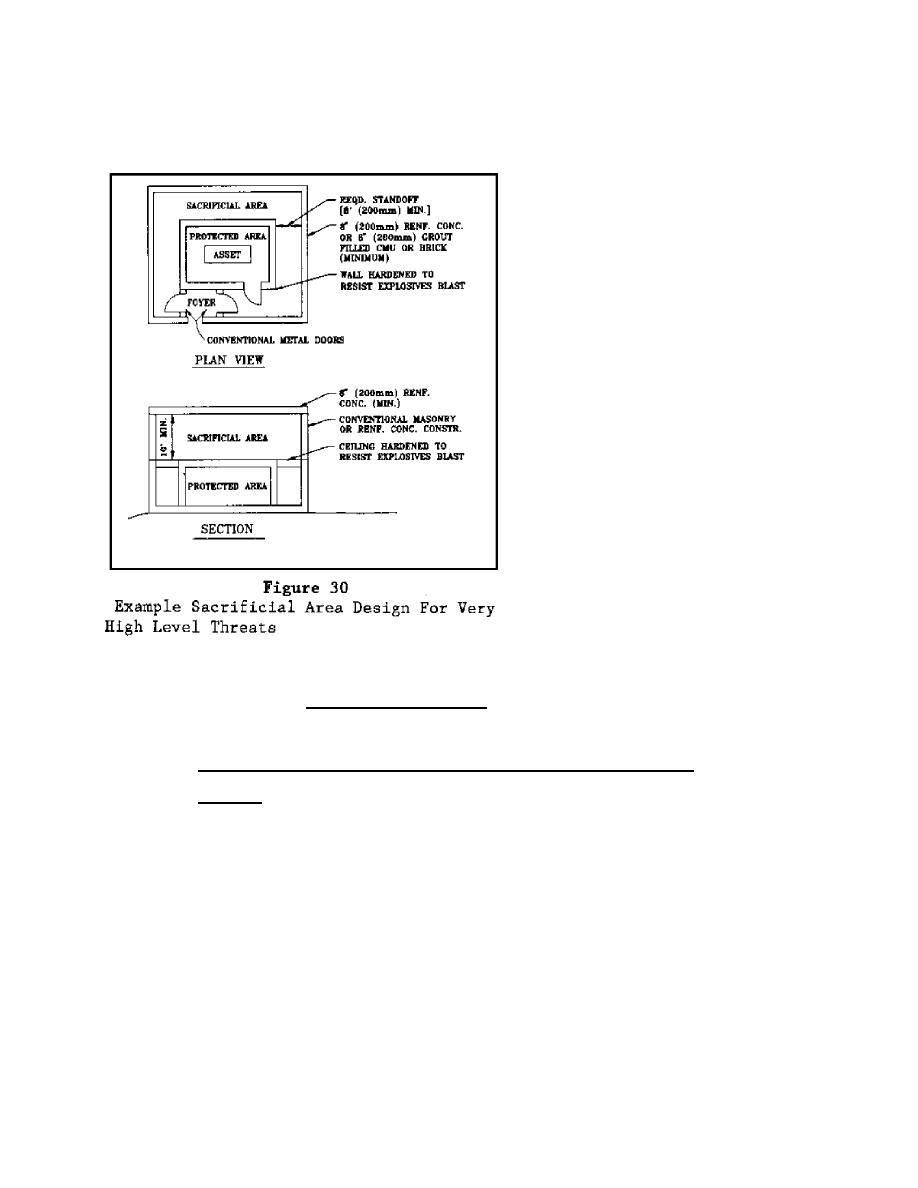

Custom Search
|
|

|
||
 MIL-HDBK-1013/1A
If an explosive-platter
(flyer plate) combination is
used as the
breaching tool, it may cut and
remove most or all the
reinforcing material.
This combination minimizes the
need to cut the rebar with hand
or thermal
tools after the concrete has
been removed by the explosives,
in many
cases significantly reducing the
penetration time. On the other
hand, the
platter charge requires much
more explosive by weight than
would be required
if a regular explosive charge
were used to remove the
concrete. This fact,
plus the weight of the platter,
results in a much heavier
configuration as
well as the possibility of
collapsing or destroying the
entire structure or
its contents, and makes the use
of platter charges questionable.
Consequently, the following wall
designs are based on the use of
bulk explosives only in combination with hand, power, and thermal tools.
b) Concrete wall design. Table 19 presents the estimated
minimum penetration delay times offered by various thicknesses of reinforced
concrete having a compressive strength of at least 5,000 psi (507,000 kPa).
5.5.3
New Wall Construction for Low- to High-Severity Threats
5.5.3.1
Summary. Table 20 summarizes the maximum penetration delay times
achievable for new wall construction options. These include concrete masonry
unit (CMU) construction, and conventional and steel-fiber-reinforced
concrete. Only these types of construction are recommended for the medium-
and high-severity threat levels. Any wall can be used for low-severity
threats. Stud-girt construction using standard materials such as wood, light
metal, stucco, and gypsum provide only nominal protection (typically less
than 2 minutes) and are not recommended for the medium and high level
threats. Note in Table 20 that, for concrete thickness up to 12 inches (305
mm), steel-fiber-reinforced concrete is the only design option meeting a
single barrier penetration time requirement of up to 50 minutes.
Conventional concrete can achieve up to 35 minutes, and CMU construction up
to 18 minutes. Where equivalent reinforced concrete or CMU options are
possible, the designer should select that which is also compatible with the
other building components and also satisfies any cost, functional,
dimensional, and aesthetic objectives.
122
|
 |
|
 |
||